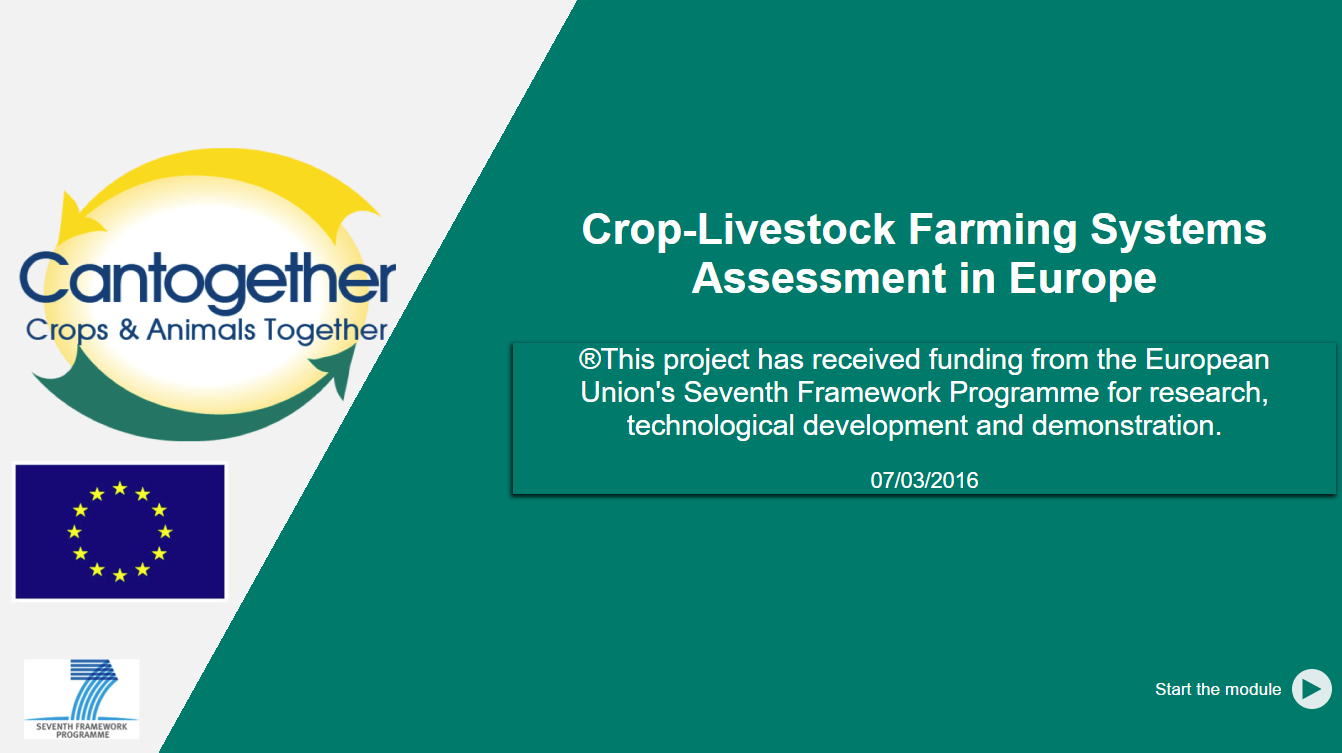CanTogether
Désolé, cette activité n’est pas visible actuellement
Vous consultez actuellement ce cours en tant que Invité.
Résumé de section
-
CANTOGETHER will design, test and assess innovative mixed farming and territorial systems, based on the simultaneous utilization of crops and animals. CANTOGETHER will demonstrate the relevance of systems combining crops and animals to increase sustainability of farms and regions. The project incorporates the following six steps:
- Identify new combinations of agronomic and livestock practices at farm, district and landscape level that will focus on optimizing the use of energy, carbon and nutrient flows by rural communities;
- Design innovative mixed farming systems for different European contexts which will combine food (animal and plant), feed and energy production (from biomass and animal wastes) through diversified land use;
- Test an innovative combination of practices and mixed farming systems at a farm and territorial level using a network of case studies across Europe;
- Assess the environmental, economic and social viability of the most promising innovative mixed systems at farm and territorial levels across Europe;
- Identify farm business, farmers’ preference, food supply and legislation related issues influencing the implementation of innovative mixed farming systems. In particular, identify the key characteristics of the future common agricultural policy that could promote the development of mixed farming systems; and,
- Disseminate innovations to key stakeholders through a participatory framework.
